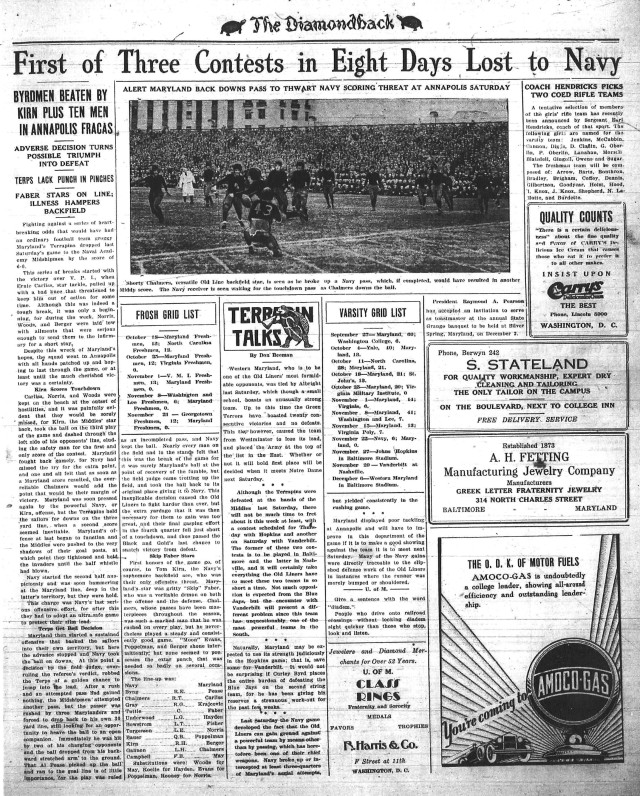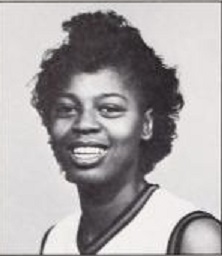“As a general thing we have stale bread, butter & meat (beef) that is hardly fit to eat, for breakfast.” So reported Maryland Agricultural College student Percy Davidson in a March 6, 1871, letter home to his mother, recently donated to the UMD Archives. Some things never change–like college students complaining about the food in the dining hall…
Davidson’s comment and a number of other interesting observations really capture what life was like at the Agricultural College in the early 1870s. He reports on student dress, his daily study routine, and his efforts to avoid “boys that I think would injure my good morals.” Davidson also asks his mother to send some “eatibles,” another necktie for Sundays, and a pair of slippers and comments on previous news from home.
Such early student commentary is rare, so this brief letter is especially valuable, and the UMD Archives is delighted to add this gem to its collections.
Try your hand at reading the letter. If you struggle a bit, the transcription appears below.
You can also stop by the Archives during our open hours and see the letter in person. Hope you will pop in soon.
This slideshow requires JavaScript.
Md. Agrl. College
Feb. March 6, 1871
My Dear Mamma
I received your letter a few moments ago I hasten to answer it.
I have two neckties but one is hardly fit for use & I should like very much to have another one for Sundays.
Papa told me when he was out here that I was looking badly & attributes it to want of exercise, but I think the reason is that we never get a change of diet, we have the same thing over & over again, & sometimes dont [sic] get enough of what we do have. It is a very rare thing for the butter or vegetables to pass around. As a general thing we have stale bread, butter & meat (beef) that is hardly fit to eat, for breakfast.
As I do not drink tea or coffee Mrs. Regester gives me a glass of milk for breakfast & supper.
We have supper at 5 o’clock & the bell rings at 6 to study. I study until about 9 1/2 or 10, but I never stay up later unless I have a harder lesson than usual to study, but since Dr. Regester has stopped us from using lamps or candles after the bell rings to go to bed I never stay up later than 10.
Boys hardly ever congregate in my room especially bad boys. I never voluntarily associate with boys that I think would injure my good morals.
I hope I have answered your questions satisfactorily for I have told you nothing but the plain truth, Mamma.
I would like very much to have the eatibles that you mentioned & also some hard-tack & anything at all that would be the most convenient for you to get, but please don’t put yourself to any extra trouble for me, for I expect my visit home will compensate for anything that I dont [sic] get out here.
I would like to have a pair of slippers to put on in the morning when I get up & at night while I am studying.
Most of the boys out here have got them.
Sister told me in one of her letters that you had a tremendous Newfoundland but she didn’t tell me its name or anything about it. Has sister got her little dog still. Tell Papa I received my suit of clothes a few days ago & they fit me splendidly. I have now got good suits of clothes including my uniform. I am glad to hear that Frankie talks & maybe he will send me a message soon.
I hope when you move you will be able to get a better house than the one which you now occupy for I know you are tired of being all cramped up.
Hoping to be with you soon & anticipating a happy meeting I remain your devoted son
Percy Davidson
 The University of Maryland Archives mourns the loss of a good friend, John McNamara, in yesterday’s tragic shooting at the offices of the Capital Gazette. John was a UMD graduate, Class of 1983, and former writer for The Diamondback before he began his career as a professional journalist.
The University of Maryland Archives mourns the loss of a good friend, John McNamara, in yesterday’s tragic shooting at the offices of the Capital Gazette. John was a UMD graduate, Class of 1983, and former writer for The Diamondback before he began his career as a professional journalist.


 According to the diary of 1930’s coed, Ruth Finzel, recently donated to the University of Maryland Archives, the Aggies football team got a “dirty deal” in their loss to the Naval Academy Middies 86 years ago today at Washington’s Griffith Stadium.
According to the diary of 1930’s coed, Ruth Finzel, recently donated to the University of Maryland Archives, the Aggies football team got a “dirty deal” in their loss to the Naval Academy Middies 86 years ago today at Washington’s Griffith Stadium.






 “We Take our Hats off to you, Miss(es) Co-eds: Celebrating 100 Years of Women’s Education at Maryland” will remain on display outside of the Footnotes Café on the first floor and in the Portico Lounge on the second floor of McKeldin through mid-January 2017. Stop by and learn more about these amazing women from 100 years ago!
“We Take our Hats off to you, Miss(es) Co-eds: Celebrating 100 Years of Women’s Education at Maryland” will remain on display outside of the Footnotes Café on the first floor and in the Portico Lounge on the second floor of McKeldin through mid-January 2017. Stop by and learn more about these amazing women from 100 years ago!

 As a tremendous, aggressive defensive star, Victoria “Vicky” Bullett was the youngest member (age 20) of the U.S women’s basketball team at the 1988 Summer Olympic Games in Seoul, South Korea. Vicky scored four points to help Team USA defeat Yugoslavia (77-70) for the gold medal! On her return from South Korea, Vicky stated that, “I’m in a daze, it still hasn’t really hit me yet. It was a great experience, very exciting.”¹ Vicky Bullett graduated from Maryland in 1989 with a degree in General Studies.
As a tremendous, aggressive defensive star, Victoria “Vicky” Bullett was the youngest member (age 20) of the U.S women’s basketball team at the 1988 Summer Olympic Games in Seoul, South Korea. Vicky scored four points to help Team USA defeat Yugoslavia (77-70) for the gold medal! On her return from South Korea, Vicky stated that, “I’m in a daze, it still hasn’t really hit me yet. It was a great experience, very exciting.”¹ Vicky Bullett graduated from Maryland in 1989 with a degree in General Studies.
 At the young age of six, Dominique Dawes began a long and successful career as a gymnast. Twelve years later after numerous competitions and already an Olympic veteran (competing in the 1992 Olympics), she once again proved her ability by gaining a position on the U.S. women’s gymnastics team for the 1996 Summer Olympics in Atlanta. By the end of the games, the team earned the nickname “Magnificent Seven” and became the first U.S. women’s gymnastics team in Olympic history to win a gold medal. Dawes would later graduate from University of Maryland (though never a member of UMD Gymnastics) in 2002 and is currently a co-chair of the President’s Council on Fitness, Sports and Nutrition while working for Yahoo Weekend News.²
At the young age of six, Dominique Dawes began a long and successful career as a gymnast. Twelve years later after numerous competitions and already an Olympic veteran (competing in the 1992 Olympics), she once again proved her ability by gaining a position on the U.S. women’s gymnastics team for the 1996 Summer Olympics in Atlanta. By the end of the games, the team earned the nickname “Magnificent Seven” and became the first U.S. women’s gymnastics team in Olympic history to win a gold medal. Dawes would later graduate from University of Maryland (though never a member of UMD Gymnastics) in 2002 and is currently a co-chair of the President’s Council on Fitness, Sports and Nutrition while working for Yahoo Weekend News.²



